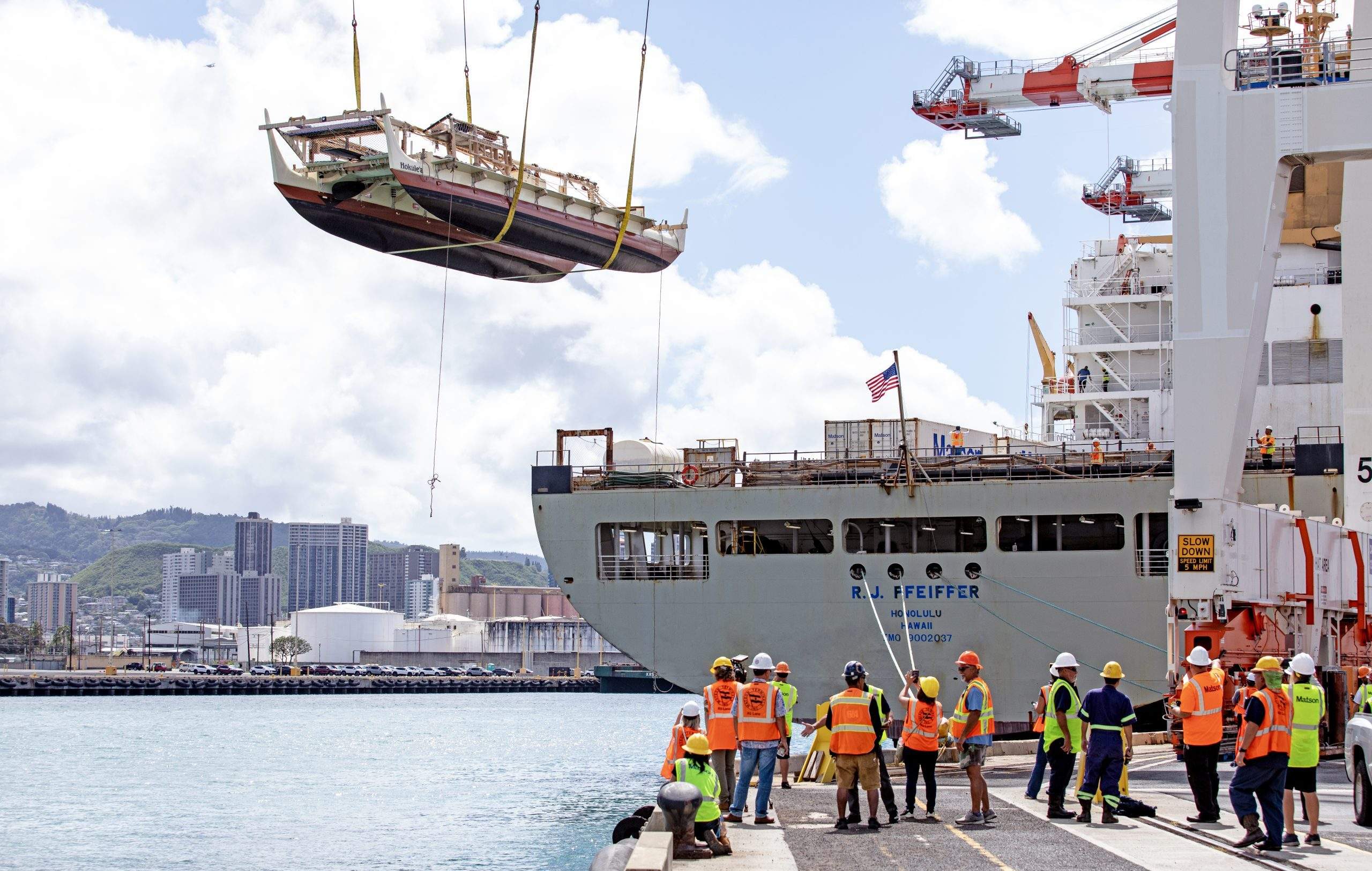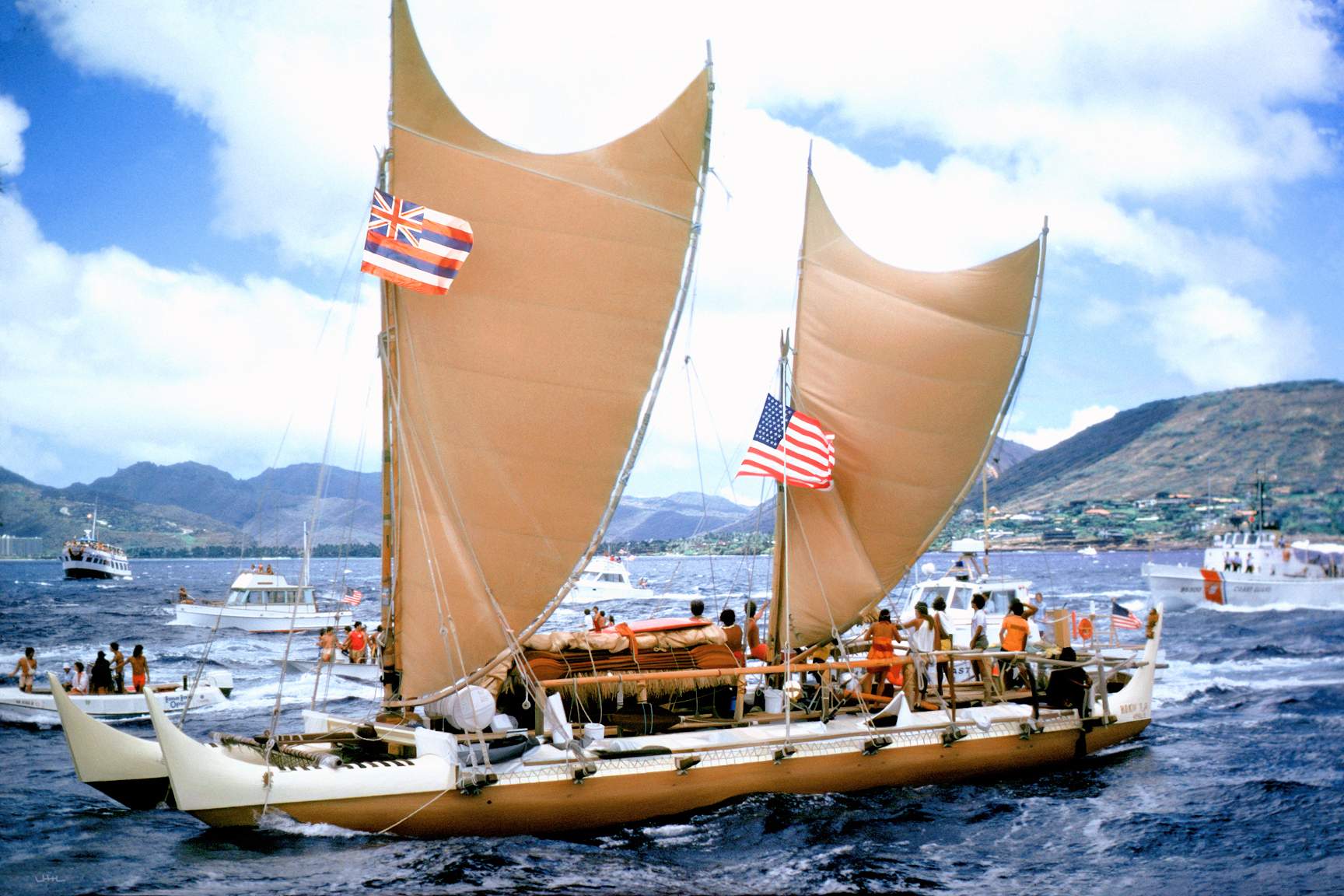
Matson Supporting New Polynesian Voyaging Society Voyage
Matson Supporting New Polynesian Voyaging Society Voyage
Matson has long supported the Polynesian Voyaging Society (PVS), having donated more than $140,000 in cash and in-kind support over the years. Our latest contribution was shipping Hokule’a,
PVS’ historic double-hulled voyaging canoe, from Hawaii to Tacoma, Wash. Hokule’a’s final destination was Alaska, where it began a nearly 43,000 nautical mile journey, titled Moananuiakea: A
Voyage for Oceans, A Voyage for Earth, 2023 to 2027, on June 10.

As with all of Hokule’a’s and PVS’s voyages, they are about exploration–to uncover, recover and reclaim. Reclaiming culture, traditions, and relationship to home and island earth, and with the case of Moananuiakea, putting knowledge into action.
On its nearly four-year journey, Hokule’a will traverse the West Coast to Mexico, Central, and South America, making its way to Polynesia and finally to New Zealand, Melanesia, and the West Pacific. The voyage will end in Japan, and Hokule’a will be shipped back to Los Angeles before being sailed back to Hawaii.
“(We’re) going to go to 36 countries and archipelagos...at least 150 indigenous territories,” said PVS President Nainoa Thompson in an interview with KITV4. “(The mission’s purpose is) to connect, explore, and discover.
“In 2017, we came home from the worldwide voyage having learned so much. Infinite amounts. Every day was a story. Every day was a lesson. There were teachers across the planet that we never even knew existed.”
Preparation is Key
“Thousands of sequences have to be in order for these canoes to go,” explained Thompson. “This (requires) hundreds of volunteer man-hours.”
“It’s really about being able to rely on each other and know that all the training we’ve put in, all the teachings of our teachers, and just everything that we've done to prepare ourselves,” added crew
member Lucy Lee. “It’s real when you're out there.”
Hokule’a was built by the newly formed Polynesian Voyaging Society in 1973. Its goal was to prove that ancient Polynesians using non-instrument navigation, purposefully and successfully
navigated the Polynesian Triangle to locate and settle on the Hawaiian Islands and revive a legacy of exploration on the verge of extinction. Hokule’a is similar to vessels that brought Hawaii’s first
settlers from the Marquesas Islands. PVS planned to sail Hokule’a from Hawaii to Tahiti and attempt to retrace the ancient voyaging route without modern navigational devices.
PVS enlisted the help of Pius “Mau” Piailug, a Micronesian master navigator from the island of Satawal. In 1950 at 18 years old, Mau took part in a traditional Pwo ceremony, where devotees of
traditional wayfinding are inducted as master navigators. Master navigators are an elite group of navigators schooled in the art and science of traditional Micronesian wayfinding and who possess the nearly lost knowledge to navigate great distances by sea using only traditional navigation techniques handed down from generation to generation: observing where stars rise and set, the
direction of ocean swells, the presence of and daily migration of birds, the hues of sea and sky, and the formations and locations of clouds.
Moananuiakea will be Hokule’a’s 15th major voyage in 50 years. With the knowledge gained from its worldwide journey (2013-2018), the PVS says, “We must deepen our values in the voyage and move from exploration and understanding to malama, or caring, and kuleana, or taking responsibility. With those values, we must move discovery toward choices and actions that we believe will help build a future good nough for our children.”

